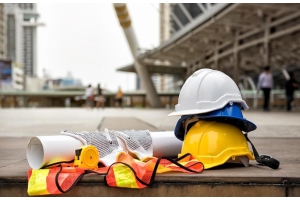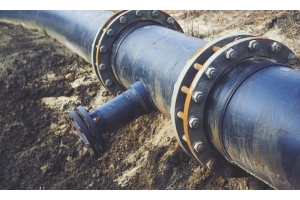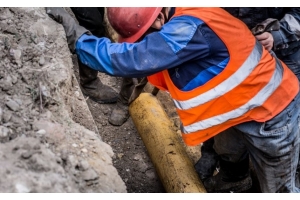Know Your Pipeline's Condition before Hot Tapping


Hot tapping is a method of connecting to a pipeline without depressurizing or removing it from service to make repairs, conduct maintenance, or add a new section of pipe. Hot tapping can be dangerous if not handled the correct way, and it’s very important to understand the conditions of the line, before you begin the process.
The basics of hot tapping
To perform a line stop, line intervention or line isolation via hot tapping, first install a fitting (nozzle, nozzle with repad, non-pressure retaining full encirclement saddle with nozzle or pressure retaining split tee) and then drill a hole in the active pipeline. Install the line stop equipment and then insert an inflatable pipe plug or other type of plug into the hole to block the flow in the line. If needed, branch connections can be used to divert the medium in the pipe around the isolated area.
Before you can use a hot tapping system to insert an inflatable pipe plug, you first have to know the parameters and conditions inside of the pipeline. The condition of the inflatable plug should also be verified before the tapping operation is started. Once the plug is installed, it should be continuously monitored while the line is blocked. To help you out, we’ve put together a list that you can follow before and during each job.
What to consider before hot tapping
- Understand safety regulations – Safety is the top priority when hot tapping a pipeline. It’s important to know and adhere to all federal, state, and municipal regulations and industry standards to protect personnel, the environment, and the pipe itself.
- Calculate the pipeline dimensions – Accurate measurements of your pipe’s diameter and wall thickness will determine whether it can handle the stresses of hot tapping and help you select the right equipment for the job.
- Assess pipeline internal conditions – Knowing the pressure, temperature, and substance within your pipeline is crucial for successful hot tapping. You also need to know if there are any protrusions, debris, or sharp edges inside the pipe, as these could damage your inflatable pipe plug or make it impossible to achieve a good seal.
- Identify any pipeline weaknesses – Before you begin you install a hot tap, it’s critical that you evaluate the pipe’s integrity and determine if there are any structural weaknesses, corrosion, or potential hazards. This evaluation will help you know if hot tapping is a feasible solution for your job.
- Inspect all equipment – Check the state of your plugs, hoses, connections, valves, and other equipment before each use. Look out for leaking, excessive wear, and any visible signs of damage.
- Continuous pressure monitoring – Once your pipe plug is in operation, it’s important to constantly measure the pressure, which should be equal on both sides of the plug during installation and removal. Use two calibrated pressure gauges for monitoring both the pressure within the inflatable pipe plug and the pipeline operating pressure.
Talk to our team
If you are unsure whether your pipeline is suitable for hot tapping or for using an inflatable pipe plug, contact our team. We can help you take the right steps to ensure the job is handled the correct way and that you use the right equipment for the job.
If you have any questions about our PeteStop® inflatable pipe plug systems, determining pipeline conditions, or hot tapping in general, please contact us.
The information may be used but with no warranty or liability. This information is believed to be correct but should always be double checked with alternative sources. Strictly adhere to and follow all applicable national and local regulations and practices.






